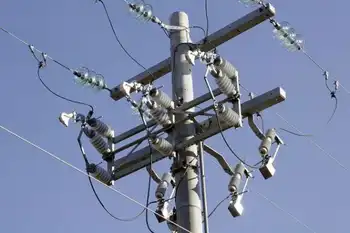Would we dam the St. Lawrence today?
Here, a ghostly road network, there, the silted foundations of what were sturdy brick homes. At one site, the heavy walls of a paper mill; at another, a bridge that once carried trains over the current in which they're now submerged.
Fifty years ago, nine communities strung along the north shore of the St. Lawrence River, on 100 square miles of Ontario west of Cornwall, vanished from the sight of all but those in airplanes or scuba gear.
Home to nearly 6,500 people – many the descendents of United Empire Loyalists who arrived after the American Revolution – the villages were sacrificed at the altar of shipping and hydro-electric power.
The inhabitants of these "lost villages" were relocated to two spiffy – some viewed them as sterile – new towns, Long Sault and Ingleside. Many took their houses with them. More left them to be burned down or knocked into rubble, along with dozens of factories, mills and Olde Ontario main-street shops.
Downstream, Mohawks on the Akwesasne Reserve lost much of their land.
The event might be called Canada's Three Gorges.
The scale of destruction and dislocation can't be compared to the damming of China's Yangtze River, which forced at least 1.8 million from their homes and inundated entire cities. Still, the principle and impacts are the same. Those in the path of a mega-project had no choice but to step aside for Progress.
And back then, no one doubted that the Moses-Saunders dam, R.H. Saunders and Franklin Delano Roosevelt power stations and the St. Lawrence Seaway locks were the very definition of progress.
On the Canadian side, 1,045 megawatts of electricity; enough to power Ottawa. Almost as much from the American side. On top of that, a route to take large ocean going ships into the heart of North America. What were 1,000 or so homes and 14,000 hectares of farms compared with those benefits?
While years of political wrangling delayed the project its basic value was never in doubt.
That view was emphasized by the men who pushed it forward: Both got things done. Robert Saunders, chair of the Hydro-Electric Power Commission of Ontario, had been Toronto's mayor, a champion of slum clearance, the subway and the Elmer the Safety Elephant school program. Saunders didn't live to see the power plant; He died in a 1955 plane crash on Hydro business.
On the American side, Robert Moses, head of the New York State Power Commission, was even more unstoppable. Known as the "master builder of the 20th century,'' he wasn't bothered by forced relocations. His New York expressways displaced hundreds of thousands.
But what if it were proposed today? How different would it be? Have we changed so much that it would be unthinkable?
In its natural state, much of the St. Lawrence was a wild torrent. European settlers were quick to harness its power and to build navigable routes around impassable rapids. But mills and canals didn't alter the river's shape or character.
In the early 20th century, the vision expanded. It took decades, but by 1954, the Canadian and U.S. governments, Ontario, New York and their power authorities were finally all onside and four years of work began on a marvel of engineering and construction.
The Seaway would bring the world's goods straight to Toronto and beyond. Iron ore from Labrador would feed booming steel mills. Our wheat and other resources would flow to the Atlantic. Electricity would light Ontario homes and run factories. On the American side, it would power new aluminum smelters.
Then, as now, Hydro, as a Crown corporation, could expropriate property. Under the law, owners could appeal, first on whether their land was required for a project that was in the public interest and, if they lost that battle, over the compensation they'd receive.
There seemed to be no question of opposing the St. Lawrence project, or objecting to the relocation sites. The plan had massive government and industry backing in an era when people still believed politicians knew what they were doing and bosses were to be obeyed.
That left compensation. Hydro, forerunner of today's Ontario Power Generation, negotiated settlements with all but a few property owners. Starting in 1955, it moved 525 homes to lots in the new towns and paid cash for the rest.
"They drove hard bargains," but "90 per cent of the landowners were treated fairly," says Jane Craig, who heads the Lost Villages Historical Society and, as a teenager, was forced to move with her family from Moulinette to Long Sault. "I don't think Hydro was out to rob us, but they had a budget to live within."
Most owners got what was considered fair market value, but it didn't reflect what they'd lost – long-time neighbours and homes right along the river, where they could swim and boat in summer and skate in winter. "I remember the anguish of my parents and neighbours," Craig says. Her father owned the hotel in Moulinette. It was one of the last buildings to be torn down. "We knew from Day 1 that we'd be flooded," she says. "We knew it and expected it, but I wasn't prepared to see it. It was a sad day when I drove by the hotel and saw it down."
Time and an influx of newcomers with no memory of the old communities have healed the wounds, Craig says. This weekend's 50th anniversary is a celebration, not a wake.
Still, this was a wrenching event, and observers expect it wouldn't happen in the same way now. Which isn't to say the project wouldn't get built. But the process would likely be different.
The St. Lawrence relocation wasn't unique then, or today.
The Three Gorges project is just one of many global examples where hydro dams uproot large numbers of people. Even more continue to be displaced by mines, highways, canals, forestry and industrial agriculture.
In Canada, 40 years ago, 2,500 Tsay Keh Dene lost their land in central B.C. when the Bennett Dam flooded their section of the Columbia River Valley. They were relocated to a town 200 kilometres away. Many, ostracized, moved back as close to their former home as they could get, and lived in unmitigated poverty. Others languished on the streets of Prince George or Vancouver.
Up on James Bay, Hydro-Québéc built a new town, Chisasabi, for Cree displaced by flooding for power dams. A new project is turning a major river, the Rupert, into a muddy, intermittent stream, wiping out hunting and trapping grounds.
But nothing has occurred in Canada that matches the destruction of the lost villages. The scope might never be equalled in Ontario since remaining large hydro-electric sites are in the sparsely populated north.
Any project would face a different legal and political climate.
The Expropriation Act remains, but courts are more generous about compensation, says Toronto environmental lawyer Dianne Saxe. The 1975 Environmental Assessment Act requires thorough impact studies.
Just as crucial, we're long past the age of deference.
"In the '50s there was no such thing as protests," Craig says. "When the government said something was going to be done, it was done. It couldn't happen today the way it happened, for sure. The protest groups that would be out there – I just couldn't see it."
Environmental lawyer Juli Aboucher agrees: "It's hard to imagine that it would happen today. It's a lot of people. There's a whole regulatory regime and appeals. It would have to go through that process. It would give community members an opportunity to raise concerns."
The 1975 law casts a wide net, Aboucher notes: Its definition of environment includes social and economic impacts. "It would all have to be looked at."
As "panic" over water shortages or climate change increases, the balance might swing back toward the projects, Saxe says.
Would, for example, the need to reduce greenhouse gas emissions trump concern over landowners' rights and damage to the natural environment?
How much weight would be given to any uncertain consequences of a project? Recent court rulings have offered conflicting views of the law: An Ontario decision about what can be burned in a cement plant came down on the side of precaution, arguing that projects shouldn't go ahead if the damage they might cause can't be predicted. Yet, a federal court gave the green light to a new Alberta tar sands mine on the basis that its operators can take care of unforeseen impacts as they occur.
It's hard to know whether the Saunders project would be built today, says OPG executive vice-president John Murphy. "My guess is... the answer would be yes."
But, "the whole process would be a lot softer. There'd be more collaboration and seeking consensus." That would be especially true for native people, he says. "We wouldn't do anything without First Nations support."
The next project, the 450-megawatt Lower Mattagami on the Moose River, would flood Moose Cree traditional territory. "We were very clear," Murphy said. "Unless they were in support, the project would not proceed."
That also turns out to be good strategy. Giving the Cree what amounted to a veto "was a significant turning point," Murphy says. "It opened the door to getting as far as we have."
Related News

Why Fort Frances wants to build an integrated microgrid to deliver its electricity
TORONTO - When the power goes out in Fort Frances, Ont., the community may be left in the dark for hours.
The hydro system's unreliability — caused by its location on the provincial power grid — has prompted the town to seek a creative solution: its own self-contained electricity grid with its own source of power, known as a microgrid.
Located more than 340 kilometres west of Thunder Bay, Ont., on the border of Minnesota, Fort Frances gets its power from a single supply point on Ontario's grid.
"Sometimes, it's inevitable that we have to have like a six- to eight-hour power outage…





